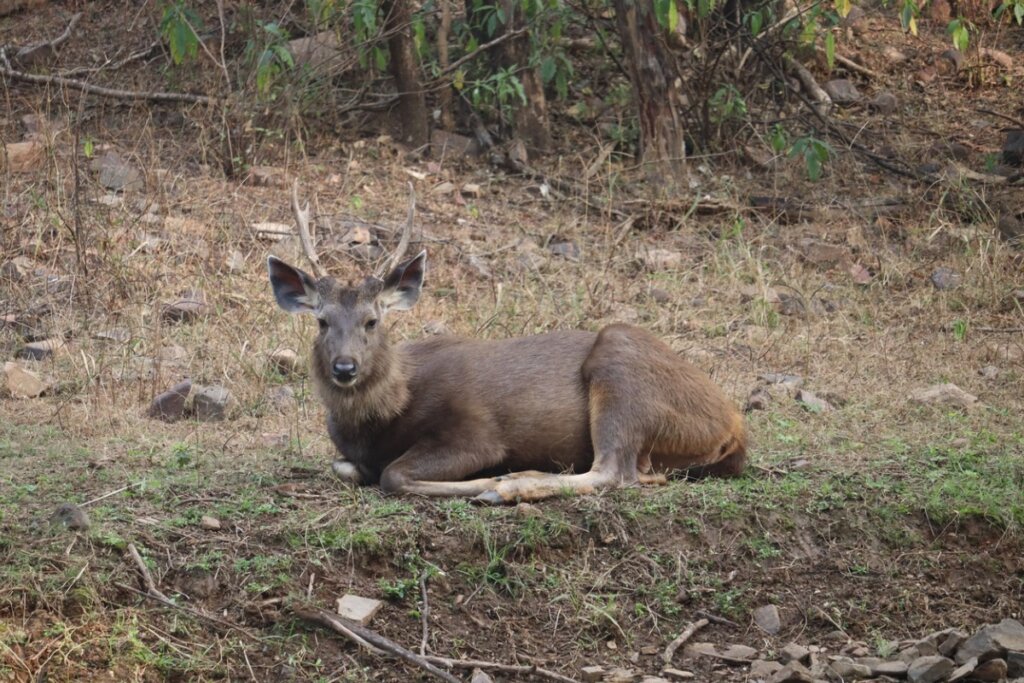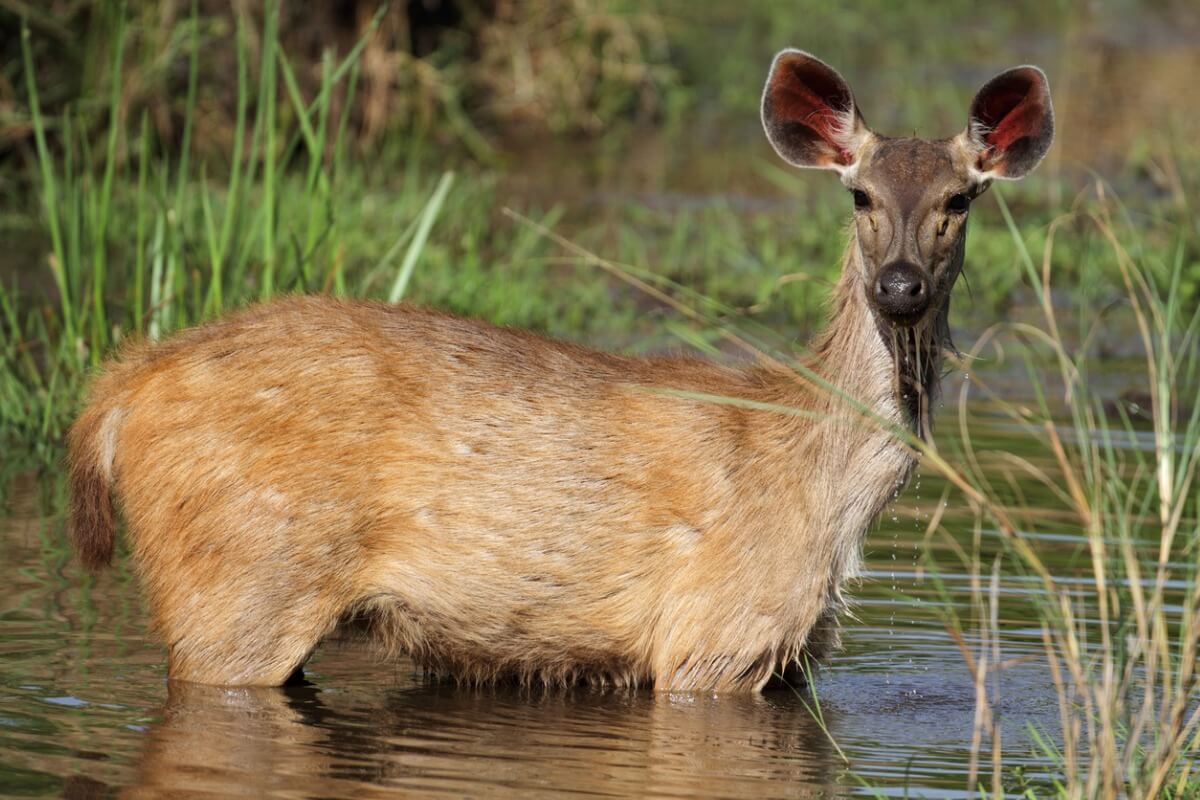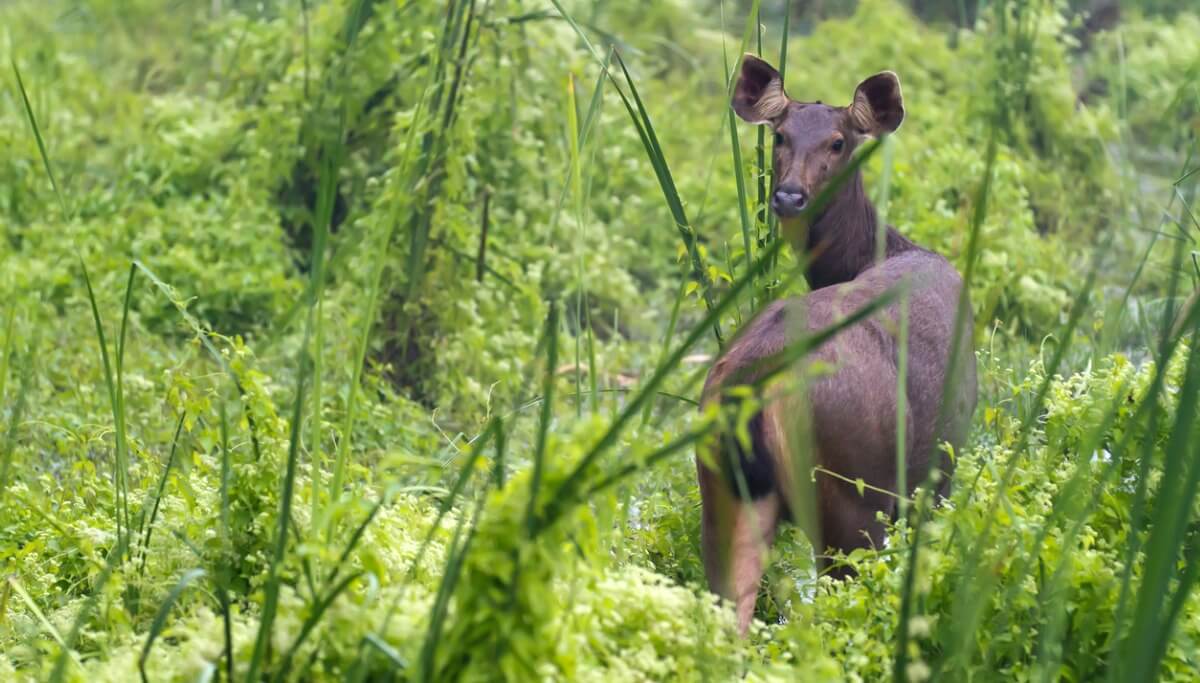Sambar: The Largest of the Eastern Deer

No, as strange as it sounds, the term “sambar” isn’t a type of typical dance: we’re talking about a kind of deer. The sambar ( Rusa unicolor ) belongs to the group of the largest oriental deer that exist.
Although native to Asia, this deer has also established itself in small populations in New Zealand, the United States, and Australia. Thanks to its size, it’s sought after for its antlers and meat and is considered a magnificent trophy for hunters. If you want to know more about this mammal, keep reading.
A big deer
With a normally brown body, this mammal has thick, dense fur. On its belly, it usually has a darker tone, on which some white areas stand out in different parts of the body. Their antlers can reach 110 centimeters in length.
Its size can vary a lot, because 7 subspecies are known. In general, they can measure between 1.6 and 2.7 meters in length, from nose to tail. As for their height, they can easily reach 1.6 meters. Their weight is around 250 kilograms on average, although the heaviest sambar that has been hunted weighed 546 kilos.
This species usually has a long life, as it can live up to 20 years naturally and 25 in captivity.

The sambar is a traveling animal
Its natural habitat includes forests and mountains around Asia. Mainly, these mammals inhabit the Himalayan mountains, as they’re the perfect place to find this species. Although it isn’t usually a very selective animal with its habitat, the minimum requirement for its survival is that there’s a nearby water source.
Because of this, it prefers humid forests, where it also shares space with other types of deer. In addition, it may be able to adapt to farmland and plantations, and so it appears to have some flexibility in terms of its habitat. Thanks to this, it has been able to reach other regions of the world and establish populations in completely new areas.
The perfect example of this is Australia, where small populations of sambar were established through accidental introduction. Due to its adaptability, it’s considered a potentially invasive species in some regions.
A vegetarian and nocturnal deer
Deer are primarily herbivores, so they eat a variety of plants, shoots, fruits, and bark. Among the rarest foods they can eat are salt pebbles, which they often lick! However, they only do this if the water resource is abundant enough in their environment.
The sambar can be considered a species with twilight habits, which means that it’s more active at night. Males can be predominantly solitary, although they sometimes form small groups. The breeding season is usually the main reason for the male to form a group with several females.
On the other hand, females are more sociable, as they usually travel with their young and other females. Their means of communication is based on body postures, smells, and noises. In this way, they manage to avoid dangers by detecting a predator and warning each other to flee.
Fighting for love
To get a mate, the males release a special scent to attract them. However, this also causes the males to fight each other in order to conquer them. Because they’re a polygamous species, the male can mate with more than one female.
Although their mating season usually lasts approximately 4 months (September-January), this mammal is capable of reproducing in any month of the year.
Female pregnancy can last between 8 and 9 months and results in a single fawn (calf). During this time, deer are extremely territorial, which is why they often delimit their area by scent. These animals use a mixture of urine and mud to rub the trees to mark their terrain.
Once the young are born, if they’re males, between their first and second year of life they’ll develop antlers. By the second year of birth, they’ll be completely independent from their parents and will even reach sexual maturity. Thus, the new offspring are prepared to repeat the life cycle again.
In danger
Since the sambar is such a large animal, it’s highly sought after for its meat, antlers, and for its use in traditional medicine. Due to this, this species is currently quite exploited, which is why it’s classified as vulnerable according to the International Union for Conservation of Nature (IUCN).
Additionally, natural predators are also destroying the numbers of these deer. Animals such as the Bengal tiger, wild dogs, crocodiles and leopards have the sambar as a part of their regular menu. In the diet of the Bengal tiger alone, this deer represents about 60% of its prey.

Due to this, experts have tried to carry out breeding programs in captivity, which has prevented their extinction. However, if their sale, consumption, and hunting don’t decrease, then these plans will most likely not be enough to save this fantastic species. We need to join forces to ensure that the sambar doesn’t disappear.
All cited sources were thoroughly reviewed by our team to ensure their quality, reliability, currency, and validity. The bibliography of this article was considered reliable and of academic or scientific accuracy.
- Leslie Jr, D. M. (2011). Rusa unicolor (Artiodactyla: Cervidae). Mammalian Species, 43(871), 1-30.
- Ramesh, T., Sankar, K., Qureshi, Q., & Kalle, R. (2012). Group size, sex and age composition of chital (Axis axis) and sambar (Rusa unicolor) in a deciduous habitat of Western Ghats. Mammalian Biology, 77(1), 53-59.
- Simcharoen, A., Savini, T., Gale, G. A., Roche, E., Chimchome, V., & Smith, J. L. (2014). Ecological factors that influence sambar (Rusa unicolor) distribution and abundance in western Thailand: implications for tiger conservation. Raffles bulletin of Zoology, 62.
- Martins, R. F., Schmidt, A., Lenz, D., Wilting, A., & Fickel, J. (2018). Human‐mediated introduction of introgressed deer across Wallace’s line: Historical biogeography of Rusa unicolor and R. timorensis. Ecology and evolution, 8(3), 1465-1479.
- Watter, K., Thomas, E., White, N., Finch, N., & Murray, P. J. (2020). Reproductive seasonality and rate of increase of wild sambar deer (Rusa unicolor) in a new environment, Victoria, Australia. Animal Reproduction Science, 223, 106630.
